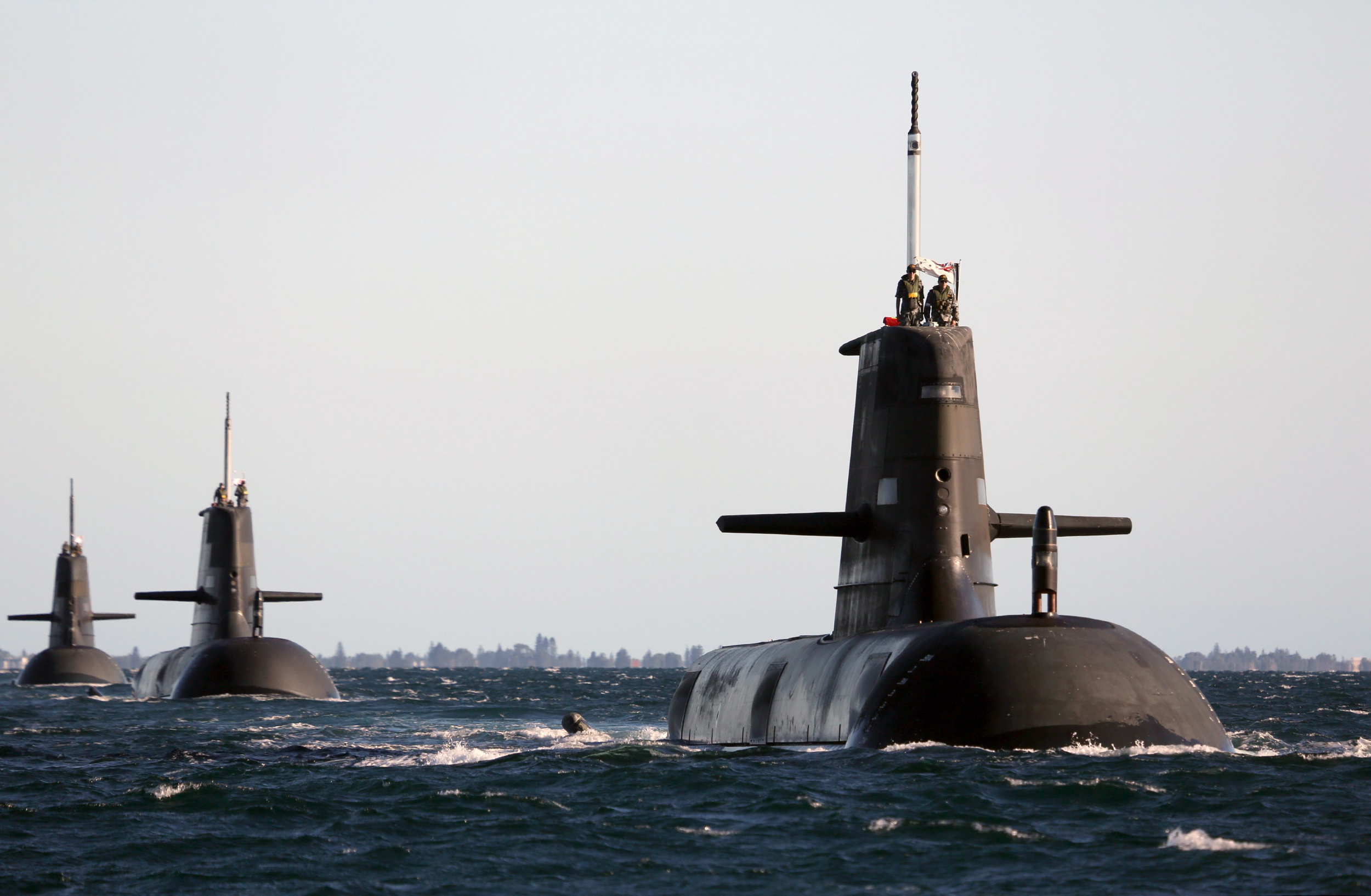
The effort to build Australia’s fleet of nuclear attack submarines could take decades to both design the boats and create the shipbuilding capacity and adequate oversight to support the effort, Chief of Naval Operations Adm. Mike Gilday said on Thursday.
The tripartite Australia, U.K. and U.S. technology pact – AUKUS – has established a framework that has kicked off an 18-month study effort to outline the scope of what the three countries need to start the Royal Australian Navy program.
“This is everything from a defense industrial base in Australia, to a community inside the Australian Navy that’s able to man, train and equip those submarines to sustain them, to the oversight mechanism similar to what we have in the United States Navy to oversee those nuclear-powered vessels. This is a very long-term effort that’ll be decades before the submarine goes in the water, it could be. I don’t see this as a short-term timeline,” Gilday said during a Thursday Defense One conference.
“We have an 18-month exploratory period that’ll get after a lot of these questions, and help Australia come to grips with exactly what they need to do to get in a path akin to the United States Navy.”
The Australians plan to build the new attack boat in Adelaide in South Australia, Prime Minister Scott Morrison said in a press conference last week. Nuclear submarines are widely considered to be the most complex defense construction program, with a degree of difficulty in both construction and operation. The Australians, with no nuclear capability domestically, will need to rely on U.S. and U.K. nuclear submarine infrastructure to develop the capacity to build the new boats.
Gilday praised AUKUS as a “brilliant stroke with respect to our posture in the Pacific, particularly visa vie China.”
Last week’s announcement of the AUKUS pact came as Canberra pulled out of a 90 billion Australian dollar ($65.6 billion) deal with France for a dozen Attack-class submarines – a derivative of the French Navy’s Suffren-class nuclear attack boat modified for a conventional propulsion system. Delays and complications in the program gave reasons for the Australians to pull out of the deal, a move that has received protests from Paris.
Last week, the French recalled their ambassadors from Washington and Canberra because of the canceled deal.
France agreed to send its ambassador to Washington, following a call between President Joe Biden and French President Emmanuel Macron, the White House announced on Wednesday.
“The two leaders agreed that the situation would have benefited from open consultations among allies on matters of strategic interest to France and our European partners. President Biden conveyed his ongoing commitment in that regard,” reads the statement.
On Thursday, Gilday said military-to-military relationships with the French Navy are still strong despite the diplomatic tension. The announcement of the deal coincided with the International Seapower Symposium at the Naval War College and Gilday met with the head of the French Navy, Adm. Pierre Vandier, four times over the three-day conference.
“We continue to work lockstep with respect to our navies marching together, fourth and fifth-generation operations in the air as an example, our ships operating together, our submarines operating together, and so I’m very confident that’s going to continue at pace, without any bumps in the road,” he said.
Gilday cited the Charles de Gaulle Carrier Strike Group’s period operating under U.S. 5th Fleet’s command as an example of the cooperation.





